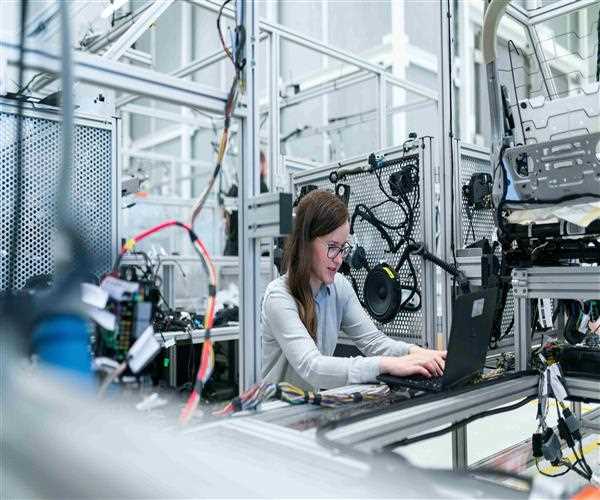Four ways nanotechnology is transforming the future of healthcare
Nanotechnology in Healthcare
The use of nanotechnology in healthcare is opening up new frontiers in the life science industry. With the ability to manipulate things at the atomic level, nanotechnology has enormous potential to revolutionize myriad aspects of medical care, including diagnostics, disease monitoring, surgical devices, regenerative medicine, vaccine development, and drug administration. It also opens the door to better treatment options for various diseases through advanced research tools that can be used for drug research.
What is nanotechnology?
Nanotechnology deals with the engineering of systems at the atomic and molecular levels. It combines components of molecular chemistry and physics with engineering to gain an advantage over the unique changes in material properties that occur at the nanoscale.
A major challenge for health care is the inability of the human body to absorb entire doses of drugs at times. This is where nanotechnology comes in. Nanotechnology allows the drug to be transported to specific cells in the body, which not only allows for more precise treatment but also reduces the chance of failure or rejection.
The ability to examine the human body, its drug therapies, and medical devices at the nanometer level ultimately allows for a much higher level of accuracy in medicine. The healthcare industry uses this technology for two major applications: diagnostics and medical devices, and nanomedicine. With rapid advances in nanotechnology, the possibilities for advancing new diagnostics and treatments with higher success rates are endless.
Here are the top four ways nanotechnology is transforming the future of healthcare:
1. Nanomedicine
Nanomedicine applies nanotechnology in medical applications such as the treatment and diagnosis of various diseases using nanoparticles in medical devices, as well as nanoelectronic biosensors and molecular nanotechnology. Nanomedicine is currently being used to develop smart pills and treat cancer. Meanwhile, MIT is producing 'Smart Sensor Capsules,' which prevent drugs from being injected into the stomach. Administered orally, it unfolds before settling on the organ, monitoring vital signs for diagnosis and treatment monitoring. It also contains compartments that can be used to preload medications that are administered to target areas of the body.
Cancer detection and treatment
A major problem with regular chemotherapy and radiation is the damage done to healthy body cells during treatment. Novel nanomedicine approaches are being used in the treatment of skin cancer, enabling efficient delivery of drugs and other treatments to specific tumor sites and target cells with few toxic side effects.
2. Nanobots
Nanobots are micro-scale robots that essentially act as miniature surgeons. They can be introduced into the body to repair and replace intracellular structures. They can also replicate to correct a genetic deficiency or even eradicate a disease by replacing DNA molecules. This property is still under development. Nanorobots are currently being tested to perform eye surgery using a microscopic needle inserted into the retina. Surgeons can direct this needle with a special magnetic field.
Nanobots can also be used to unclog arteries by piercing them. Scientists from Michigan State University and Stanford University have teamed up to develop nanobots that contain carbon nanotubes loaded with a drug that can eat away at arterial plaque. This can reduce the risk of a heart attack. Scientists at the University of Toronto are developing nanobots that resemble open cubes to perform quick biopsies of suspected malignant masses. These cubes fold up once they reach the target tissue and sample it. These biopsies would be faster and more accurate than those of human surgeons.
DNA-based nanobots are also created to target specific disease cells. Harvard Medical School researchers transformed DNA into an 'origami nanorobot' to carry a molecular charge. His team succeeded in demonstrating how the robot delivered molecules that triggered the death of certain pathological cells.
3. Nanofibers
Nanofibers are used in wound dressings and surgical textiles as well as in implants, tissue engineering, and artificial organ components.
Scientists are working to develop 'smart bandages' which, if left in place, will self-absorb into the tissues as the wound heals. The nanofibers embedded in these smart bandages can contain coagulants, antibiotics, and even sensors to detect signs of infection.
4. Wearables based on nanotechnology
The use of textile nanotechnology in healthcare is a new but popular form of remote patient monitoring. Such wearables have nanosensors built into the fabric that record medical data, such as heart rate, sweat components, and blood pressure. It helps save lives by warning the wearer and medical professionals of the adverse changes the body faces.
The a long way to go
At present, nanotechnology in the healthcare sector still has many obstacles to overcome. Further research is needed on the long-term effects of nanotechnology and its impact on the environment. Authorities need to establish clearer guidelines regarding nanotechnology-based devices and potential health risks. Devices based on nanotechnology are often expensive, which hinders their mass production. Affordable production alternatives for these devices will help mainstream this technology.
However, there is growing optimism that nanotechnology, when applied to healthcare, can bring significant advances in the diagnosis, treatment, and prevention of disease. There is growing interest among innovators in future applications of nanotechnology in healthcare and how it could lead the industry into a new era of development.




Leave Comment